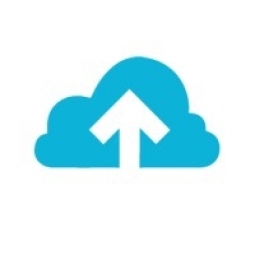技术
- 功能应用 - 计算机化维护管理系统 (CMMS)
- 平台即服务 (PaaS) - 设备管理平台
适用行业
- 电子产品
- 医疗保健和医院
适用功能
- 维护
- 质量保证
用例
- 资产健康管理 (AHM)
- 资产生命周期管理
服务
- 系统集成
- 培训
关于客户
该客户是一家位于纽约州纽约市的大型学术医疗中心。它在 6 个住院设施和 300 个地点拥有超过 100,000 项医疗资产。卫生系统以其创新、绩效、增长和对社区的服务而自豪。其临床工程部门是其成功的关键。卫生系统最近还收购了一家新医院。客户需要一种新的计算机化维护管理软件 (CMMS),该软件不仅可以满足卫生系统当前和未来的需求,还可以帮助清理和标准化其遗留数据。
挑战
位于纽约州纽约市的一家大型学术医疗中心在 6 个住院设施和 300 个地点拥有超过 100,000 项医疗资产,该中心面临着过时的计算机化维护管理软件 (CMMS) 的挑战。卫生系统的临床工程部门是其成功的关键,他们意识到需要更换他们的 CMMS 以满足卫生系统当前和未来的需求。他们希望所有医院都使用相同的 CMMS,但他们也明白切换 CMMS 系统可能很困难且成本高昂。此外,他们意识到现有系统中的数据并不像他们希望的那样干净。卫生系统还收购了一家新医院,并希望它使用同一个 CMMS。面临的挑战是选择合适的 CMMS、清理遗留数据并对新医院的资产命名进行标准化以符合既定标准。
解决方案
该卫生系统得到了 ISS Solutions Inc. 的帮助,该公司是 Geisinger 卫生系统旗下提供临床设备管理服务的公司。 ISS Solutions 对行业排名前 5 的 CMMS 产品进行了市场分析,比较了 CMMS 供应商及其产品的关键特性,与供应商会面验证了其产品的功能,并向卫生系统提供了详细的报告在他们的选择过程中使用。根据 ISS Solutions 的分析,临床工程部门选择 Nuvolo Connected Workplace for Healthcare 作为其下一个 CMMS。随后,ISS Solutions 与客户的临床工程和 IT 团队合作,分析和清理超过 100,000 条记录,以删除重复的制造商和型号、标准化设备类型并纠正其他异常情况。他们还清理和标准化了新医院的资产命名法,以符合既定标准。所有数据清理完成后,卫生系统就可以迁移到 Nuvolo。
运营影响

Case Study missing?
Start adding your own!
Register with your work email and create a new case study profile for your business.
相关案例.

Case Study
Remote Temperature Monitoring of Perishable Goods Saves Money
RMONI was facing temperature monitoring challenges in a cold chain business. A cold chain must be established and maintained to ensure goods have been properly refrigerated during every step of the process, making temperature monitoring a critical business function. Manual registration practice can be very costly, labor intensive and prone to mistakes.

Case Study
Hospital Inventory Management
The hospital supply chain team is responsible for ensuring that the right medical supplies are readily available to clinicians when and where needed, and to do so in the most efficient manner possible. However, many of the systems and processes in use at the cancer center for supply chain management were not best suited to support these goals. Barcoding technology, a commonly used method for inventory management of medical supplies, is labor intensive, time consuming, does not provide real-time visibility into inventory levels and can be prone to error. Consequently, the lack of accurate and real-time visibility into inventory levels across multiple supply rooms in multiple hospital facilities creates additional inefficiency in the system causing over-ordering, hoarding, and wasted supplies. Other sources of waste and cost were also identified as candidates for improvement. Existing systems and processes did not provide adequate security for high-cost inventory within the hospital, which was another driver of cost. A lack of visibility into expiration dates for supplies resulted in supplies being wasted due to past expiry dates. Storage of supplies was also a key consideration given the location of the cancer center’s facilities in a dense urban setting, where space is always at a premium. In order to address the challenges outlined above, the hospital sought a solution that would provide real-time inventory information with high levels of accuracy, reduce the level of manual effort required and enable data driven decision making to ensure that the right supplies were readily available to clinicians in the right location at the right time.

Case Study
Gas Pipeline Monitoring System for Hospitals
This system integrator focuses on providing centralized gas pipeline monitoring systems for hospitals. The service they provide makes it possible for hospitals to reduce both maintenance and labor costs. Since hospitals may not have an existing network suitable for this type of system, GPRS communication provides an easy and ready-to-use solution for remote, distributed monitoring systems System Requirements - GPRS communication - Seamless connection with SCADA software - Simple, front-end control capability - Expandable I/O channels - Combine AI, DI, and DO channels

Case Study
Driving Digital Transformations for Vitro Diagnostic Medical Devices
Diagnostic devices play a vital role in helping to improve healthcare delivery. In fact, an estimated 60 percent of the world’s medical decisions are made with support from in vitrodiagnostics (IVD) solutions, such as those provided by Roche Diagnostics, an industry leader. As the demand for medical diagnostic services grows rapidly in hospitals and clinics across China, so does the market for IVD solutions. In addition, the typically high cost of these diagnostic devices means that comprehensive post-sales services are needed. Wanteed to improve three portions of thr IVD:1. Remotely monitor and manage IVD devices as fixed assets.2. Optimizing device availability with predictive maintenance.3. Recommending the best IVD solution for a customer’s needs.









